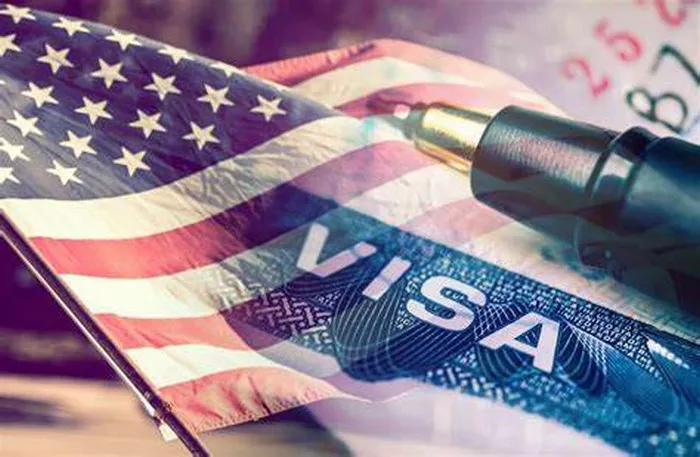In the realm of U.S. immigration, nonimmigrant visas play a crucial role in facilitating temporary stays for a variety of purposes. These visas are distinct from immigrant visas, which are designed for individuals seeking permanent residency in the United States. Nonimmigrant visas are issued to foreign nationals who wish to enter the U.S. on a temporary basis, whether for tourism, business, education, temporary work, medical treatment, or other specific reasons outlined under U.S. immigration law.
Types of Nonimmigrant Visas
The U.S. Department of State categorizes nonimmigrant visas into several classifications, each tailored to accommodate different purposes and eligibility criteria. Understanding these categories is essential for determining which visa type best suits an individual’s intended temporary stay in the United States.
1. Visitor Visas (B-1/B-2):
The B-1 visa is intended for business visitors who need to engage in business activities such as meetings, negotiations, or attending conferences.
The B-2 visa is for tourists visiting the U.S. for pleasure, tourism, or medical treatment.
2. Student Visas (F and M):
The F visa is for academic students enrolled in universities, colleges, high schools, private elementary schools, seminaries, conservatories, or other academic institutions or in language training programs in the United States.
The M visa is for students enrolled in vocational or other nonacademic programs, other than language training.
3. Exchange Visitor Visas (J):
The J visa is for individuals approved to participate in work-and-study-based exchange visitor programs.
4. Temporary Work Visas (H, L, O, P, Q):
The H visa category includes various subcategories such as H-1B for specialty occupations, H-2A for temporary agricultural workers, and H-2B for temporary non-agricultural workers.
The L visa is for intracompany transferees who work for a multinational company with offices in the U.S.
The O visa is for individuals with extraordinary ability or achievement in their field of expertise.
The P visa is for athletes, artists, and entertainers.
The Q visa is for participants in international cultural exchange programs designated by USCIS.
5. Treaty Trader and Investor Visas (E-1 and E-2):
The E-1 visa is for treaty traders engaged in substantial trade between the United States and their country of nationality.
The E-2 visa is for treaty investors who have invested, or are actively in the process of investing, a substantial amount of capital in a U.S. business.
6. Diplomatic and Official Visas (A, G, C-3):
The A visa is for diplomats and other foreign government officials.
The G visa is for representatives to international organizations and their immediate families.
The C-3 visa is for foreign government officials traveling to the United States on official business.
Application Process for Nonimmigrant Visas
Applying for a nonimmigrant visa involves several steps and requirements that vary depending on the visa category. The process generally includes:
Completing the Visa Application Form (DS-160): This form collects biographical information about the applicant, including details about their intended stay in the U.S.
Paying the Visa Application Fee: Most nonimmigrant visa applications require a non-refundable application fee, which varies depending on the visa type.
Scheduling a Visa Interview: After completing the DS-160 form and paying the fee, applicants must schedule an interview at the nearest U.S. embassy or consulate. The interview is a crucial step in the visa application process and provides an opportunity for consular officers to assess the applicant’s eligibility.
Gathering Required Documentation: Applicants must compile supporting documents, which may include a valid passport, passport-sized photographs, proof of fee payment, proof of ties to their home country (such as employment or property ownership), and any additional documents specific to the visa category.
Attending the Visa Interview: During the interview, applicants must demonstrate their eligibility for the visa and provide truthful and accurate information about their intended stay in the United States.
Visa Decision: After the interview, the consular officer will determine whether to approve or deny the visa application. If approved, the applicant’s passport will be returned with the visa affixed, allowing them to travel to the United States within the validity period of the visa.
SEE ALSO: WHY U.S. STUDENT VISAS GET REJECTED? REASONS YOU NEED TO KNOW
Key Considerations for Nonimmigrant Visa Holders
Once granted a nonimmigrant visa and upon entry into the United States, visa holders must adhere to certain conditions and responsibilities:
Duration of Stay: Each nonimmigrant visa category has specific rules regarding the length of authorized stay in the United States. It’s essential for visa holders to depart the U.S. before their authorized period of stay expires to avoid violating immigration laws.
Employment Restrictions: While some nonimmigrant visas permit employment in the United States, others do not. Visa holders should familiarize themselves with the specific work authorization rules associated with their visa category.
Maintaining Status: Visa holders must maintain their nonimmigrant status by complying with all visa conditions and reporting any changes or extensions of stay to U.S. Citizenship and Immigration Services (USCIS) if applicable.
Travel and Reentry: Nonimmigrant visa holders can generally travel in and out of the United States within the validity period of their visa. However, it’s important to ensure that the visa remains valid and that all entry requirements are met each time they seek to reenter the U.S.
Conclusion
Nonimmigrant visas serve as a vital mechanism for facilitating temporary stays in the United States for various purposes, from tourism to business, education, and employment. Understanding the different visa categories and their respective requirements is crucial for prospective travelers and temporary residents seeking to navigate the U.S. immigration system effectively. By adhering to visa conditions, maintaining status, and fulfilling all necessary requirements, nonimmigrant visa holders can make the most of their temporary stay in the United States while complying with U.S. immigration laws and regulations.


